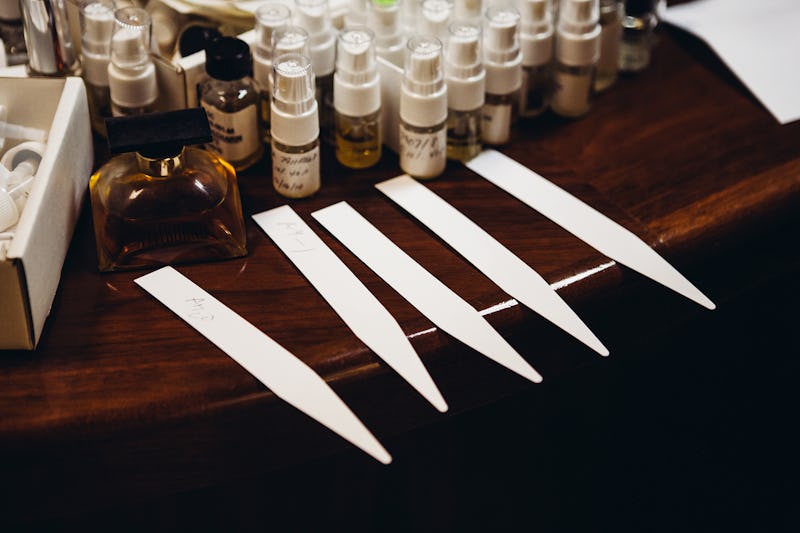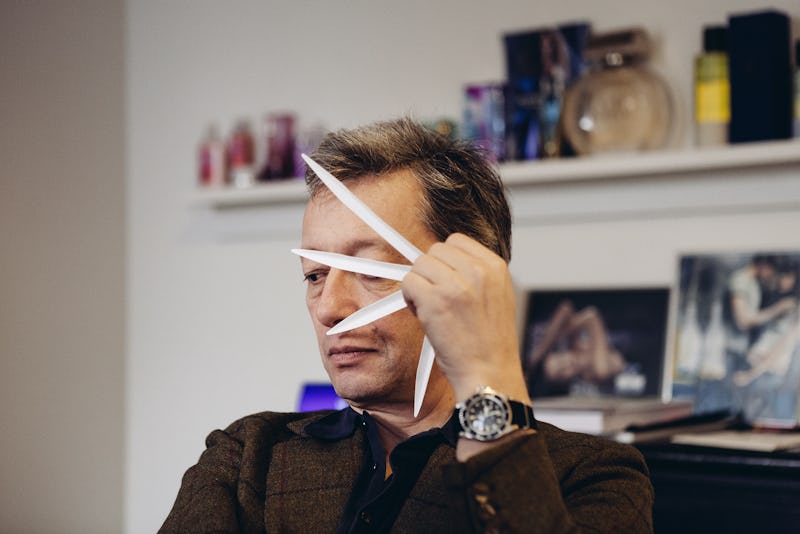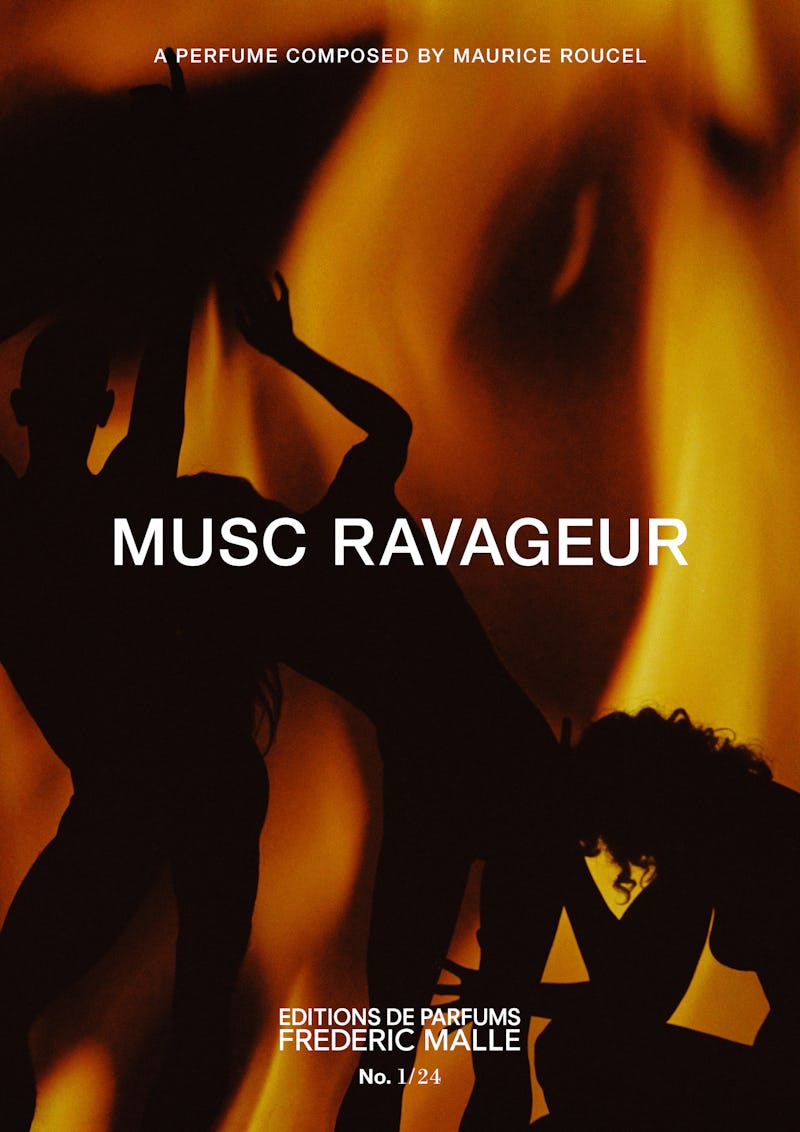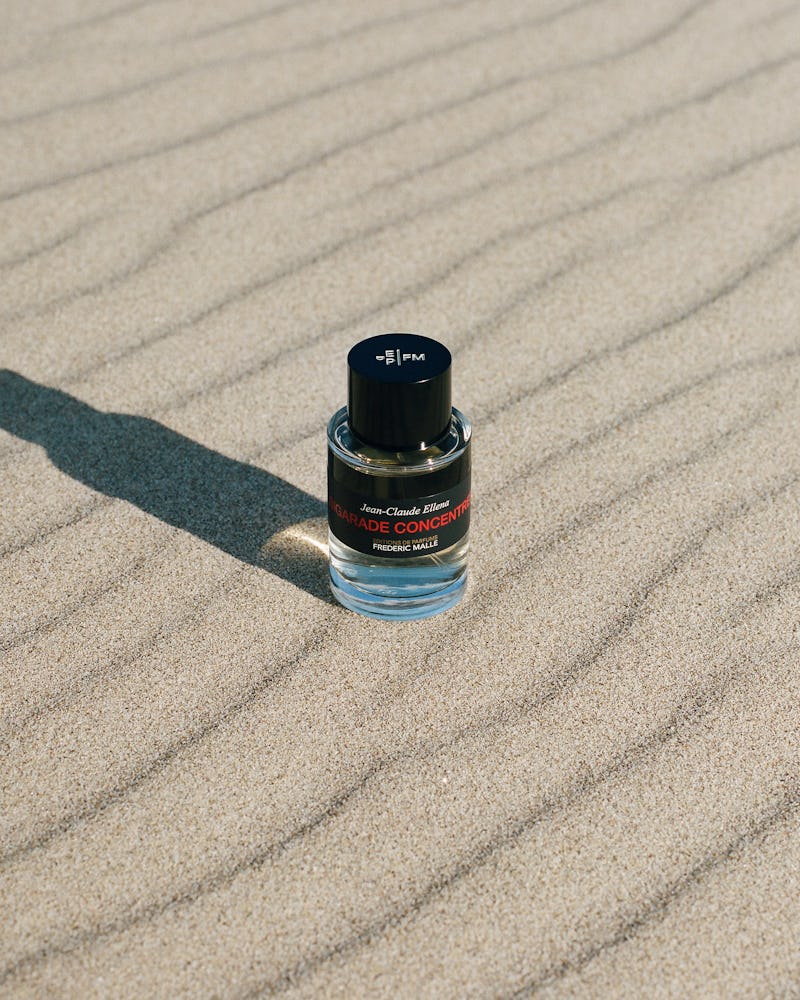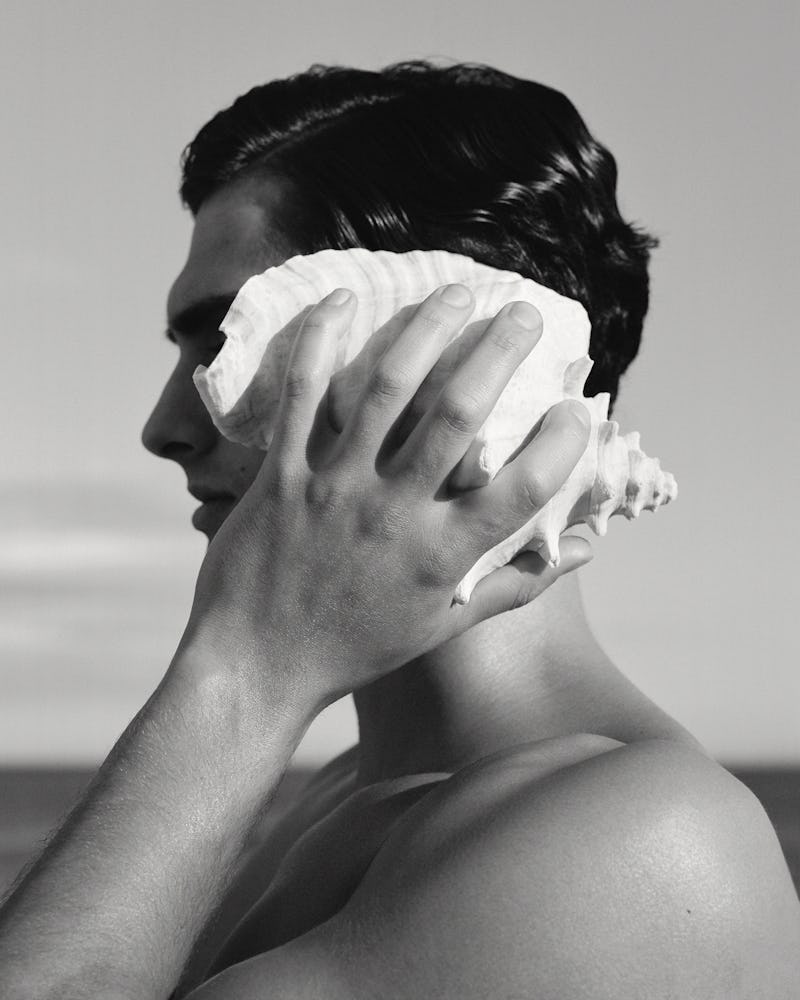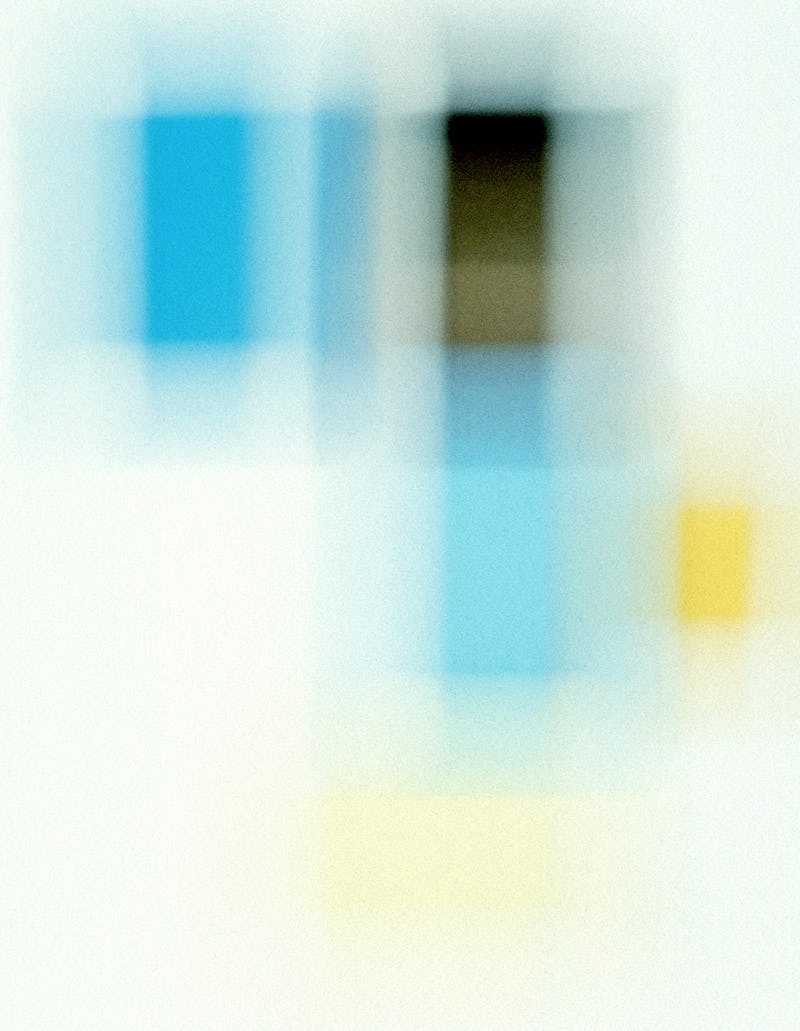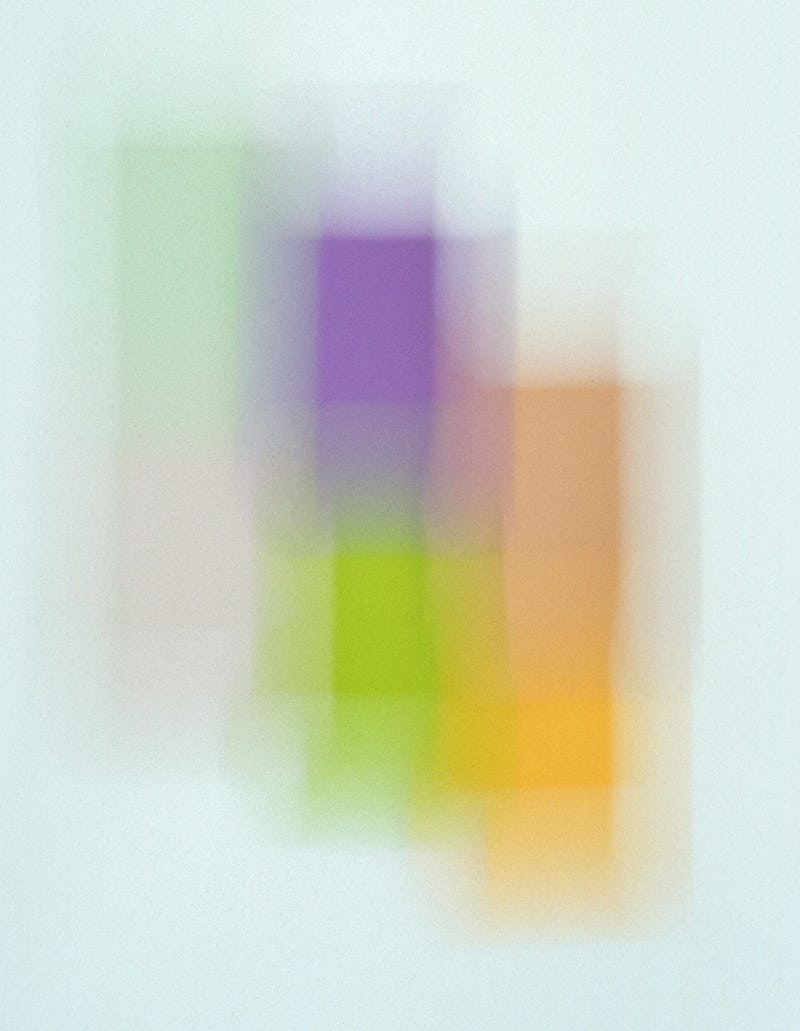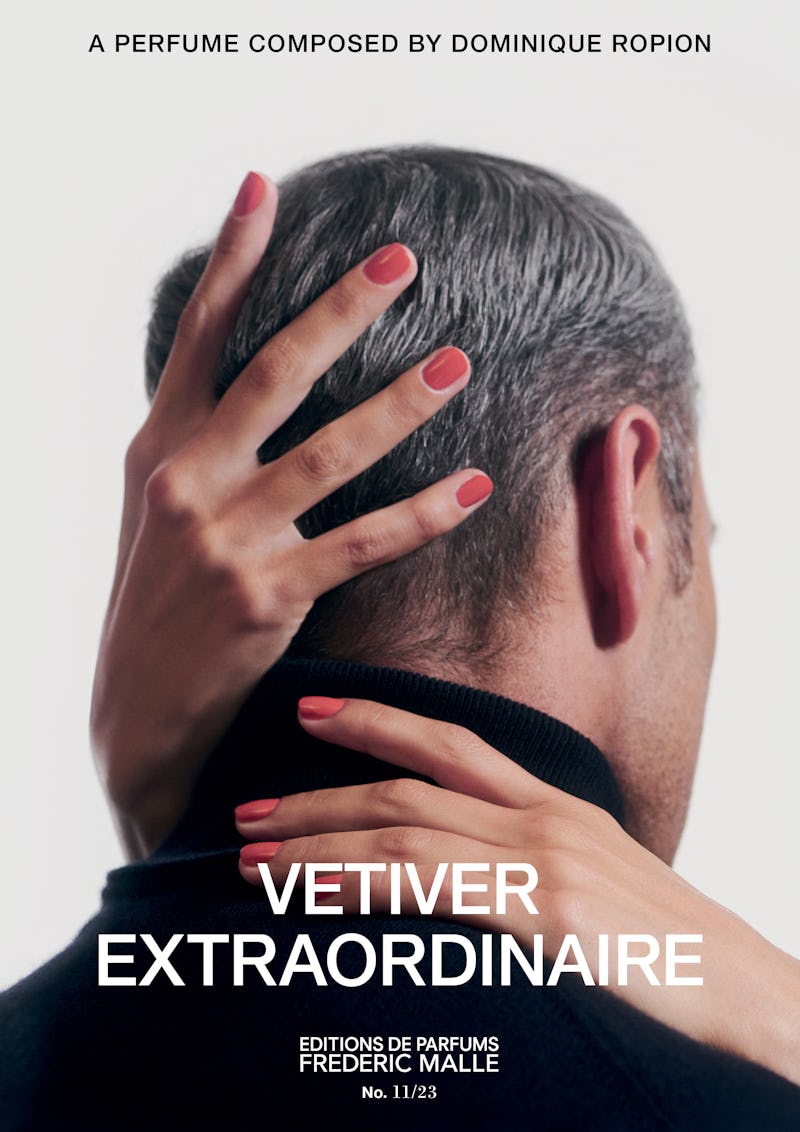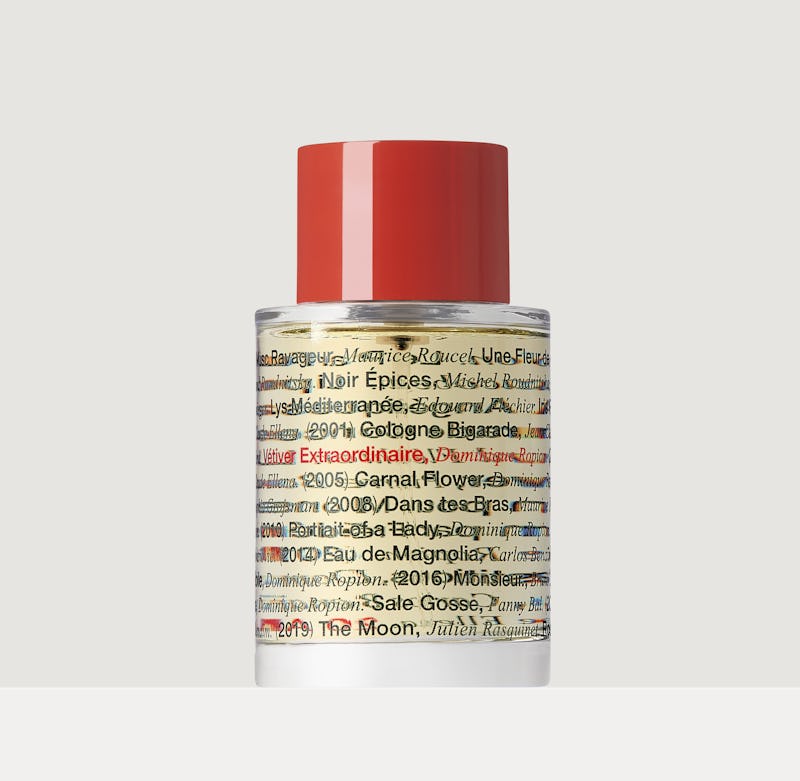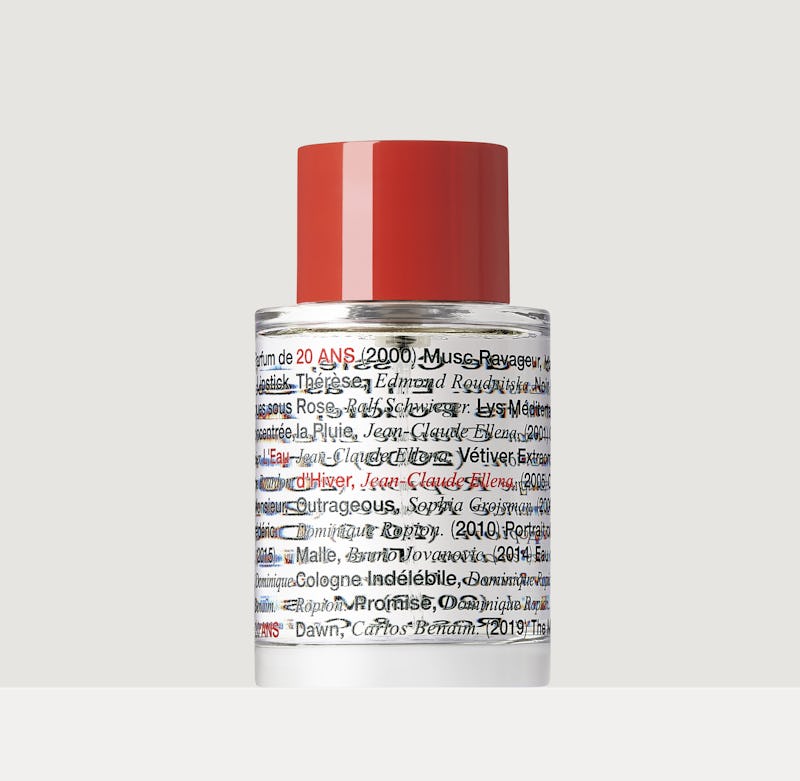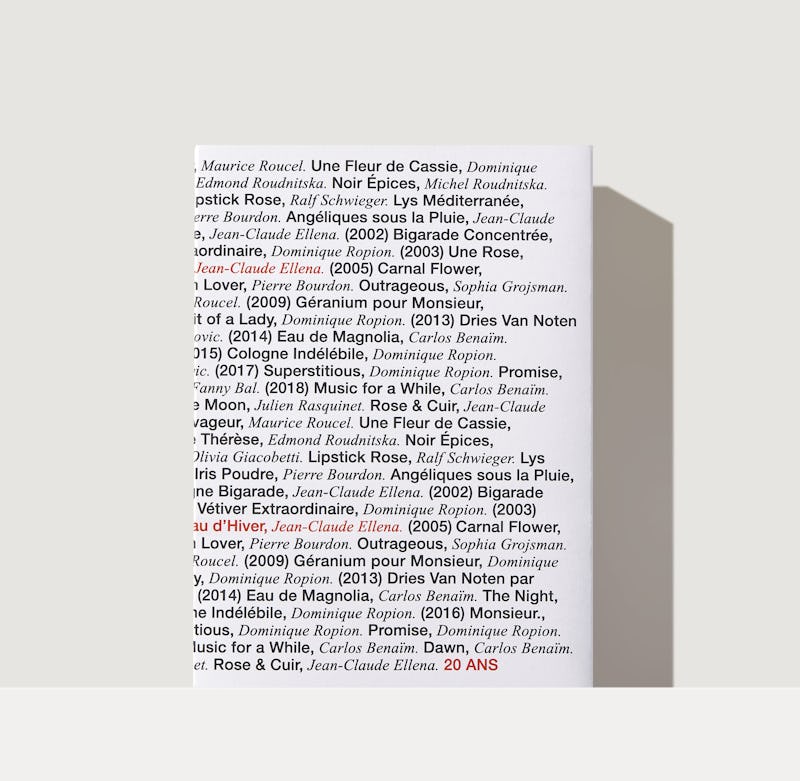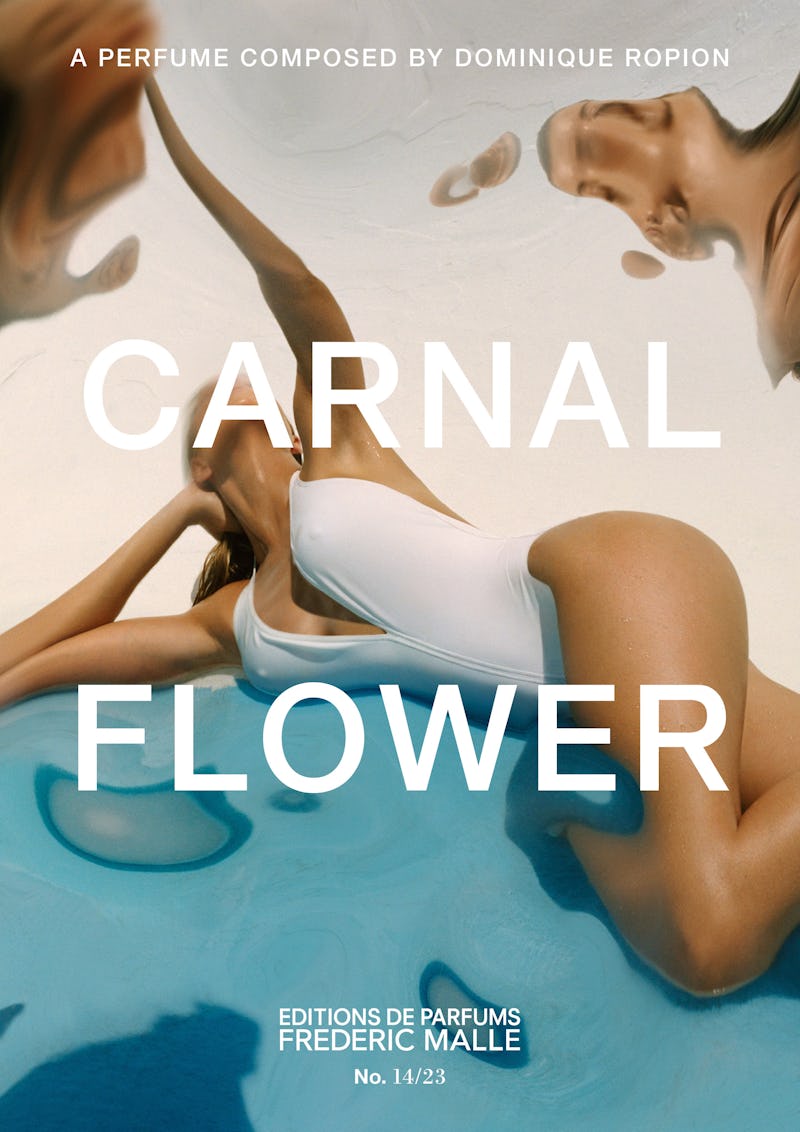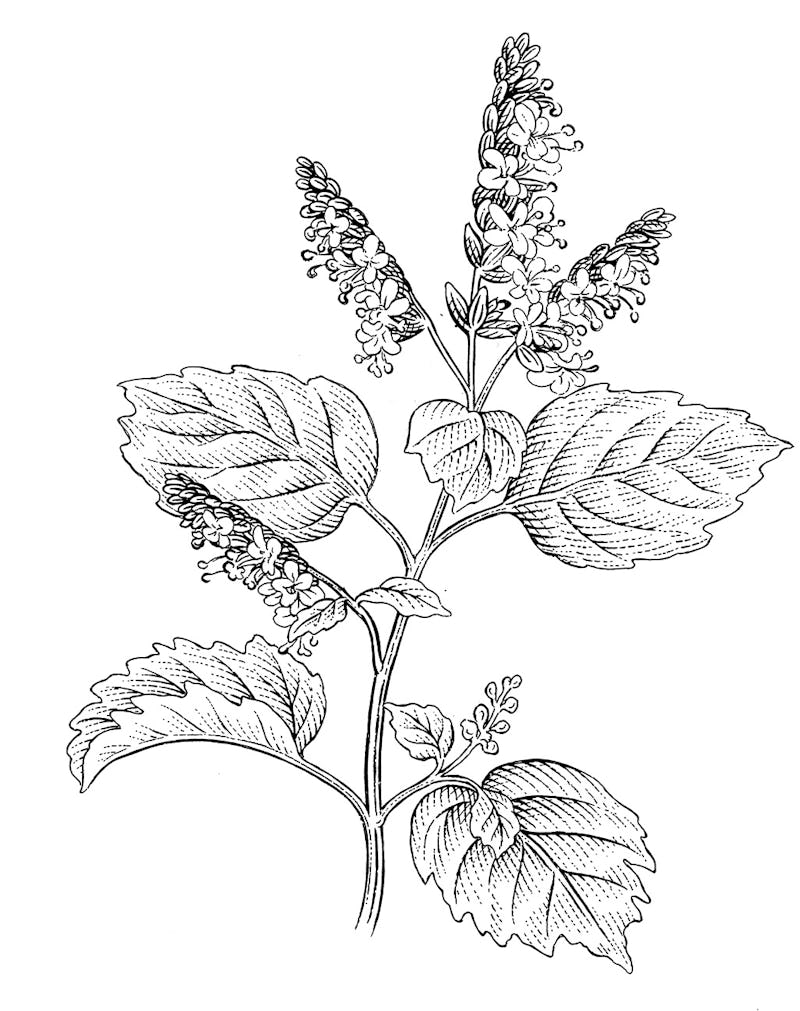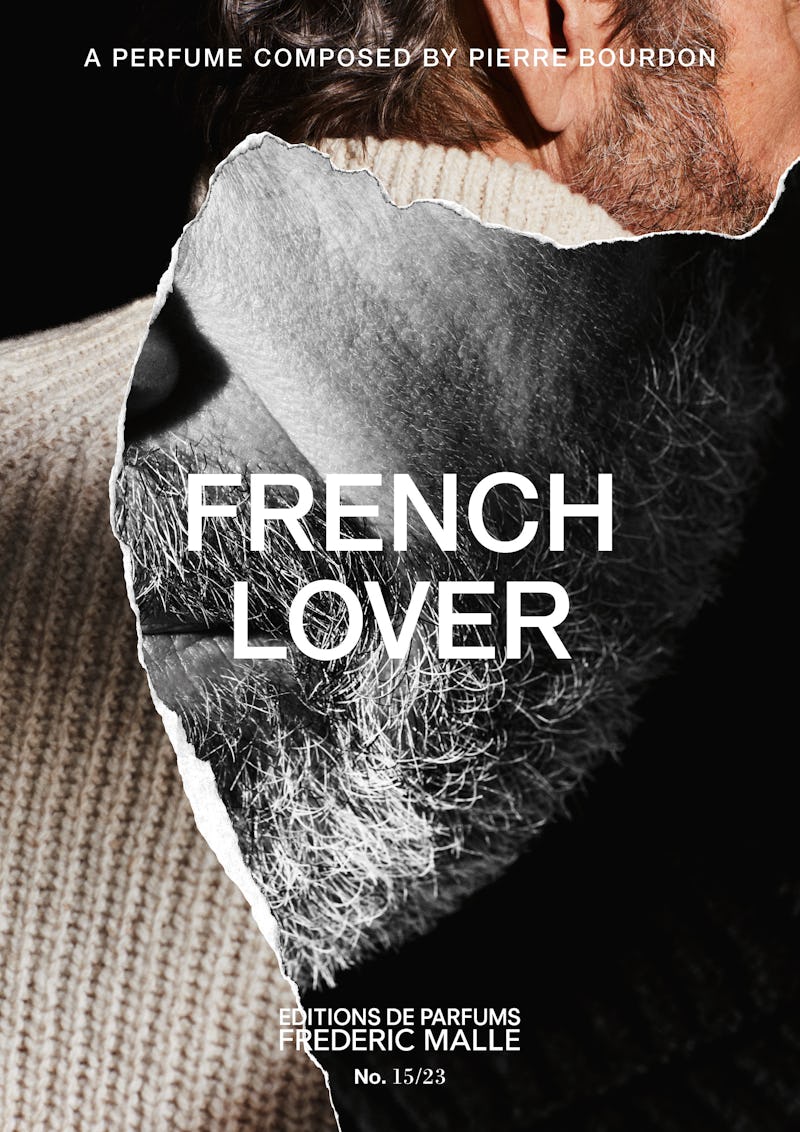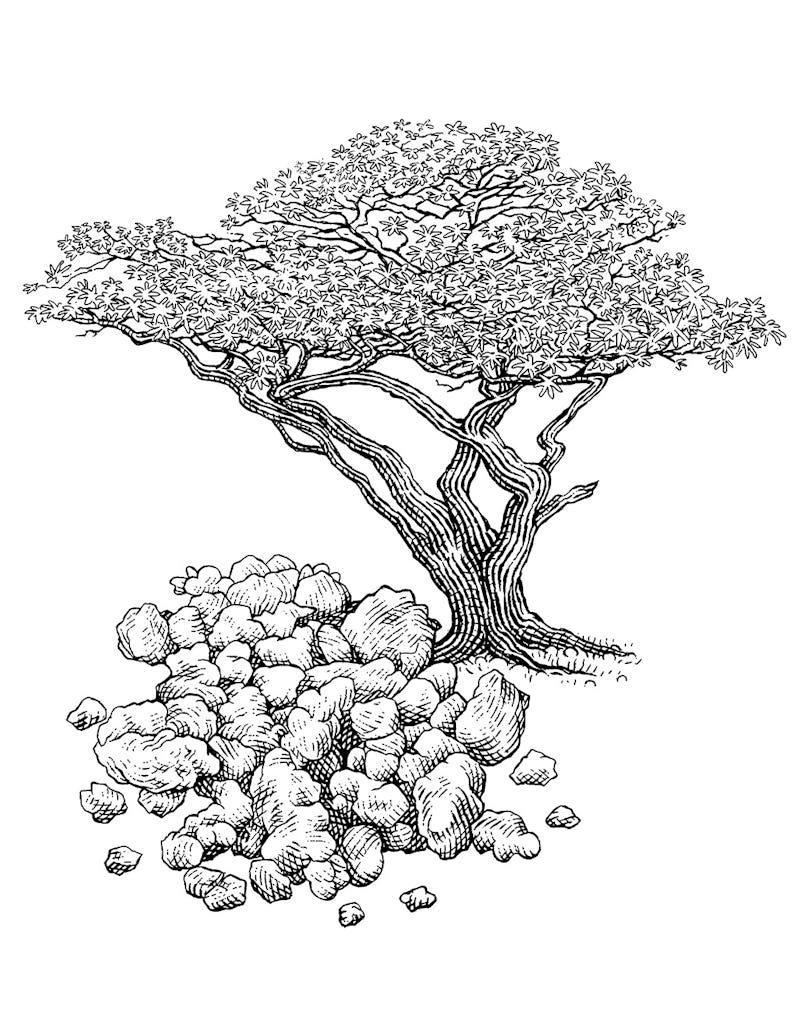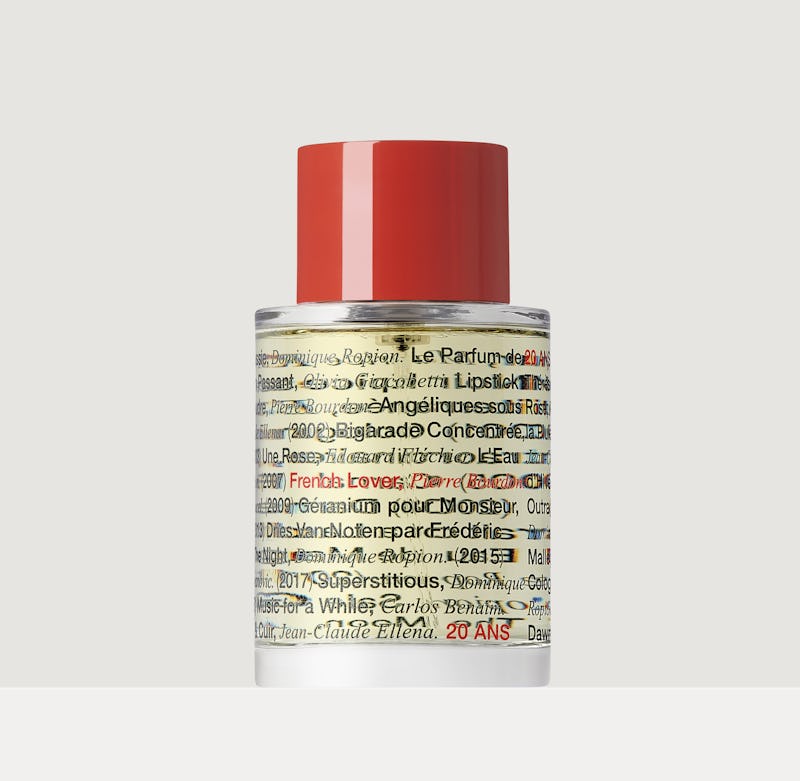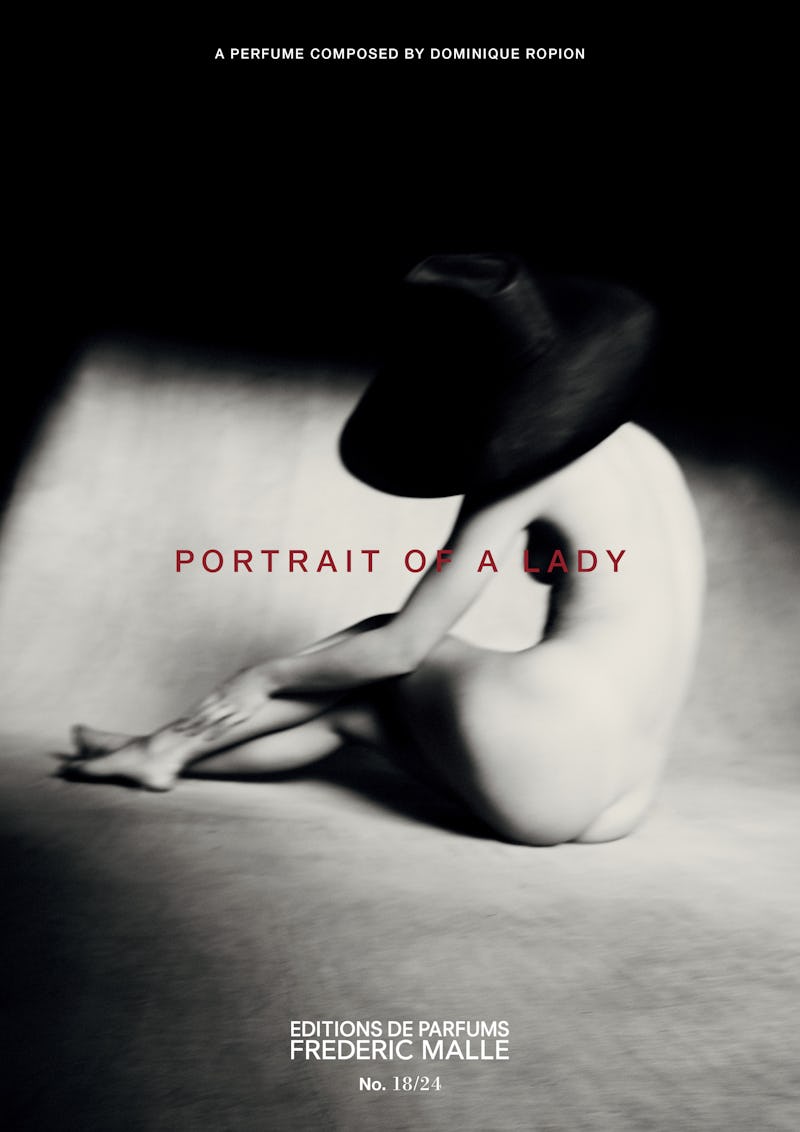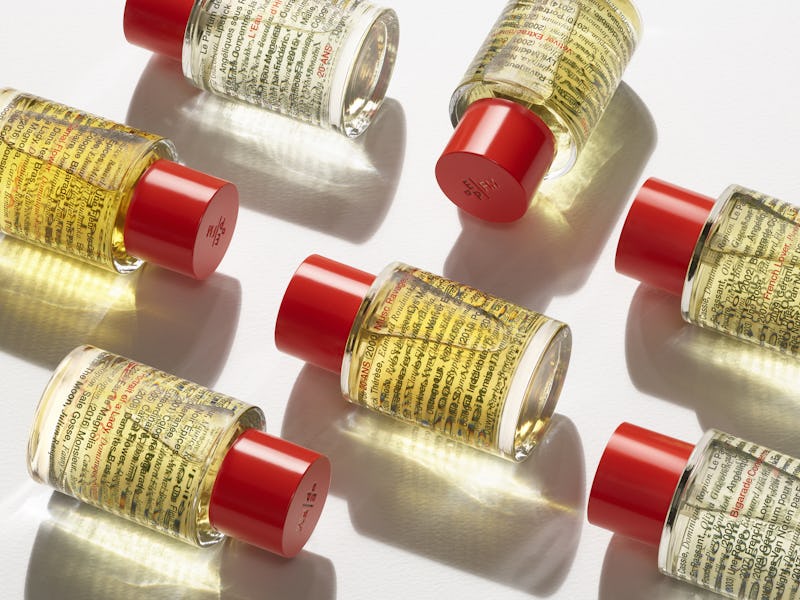BEHIND THE SCENES
or How the Seven Essential Masterpieces of Editions de Parfums Were Born
Frédéric Malle at the International Fragrance and Flavors headquarters in New York
Frédéric Malle at the International Fragrance and Flavors headquarters in New York
When Frédéric Malle tells the story of the creation of each perfume in the collection, he becomes extremely talkative, without realizing it… Here is a little glimpse into his anecdotes from the creation of the seven masterpieces that became the house’s greatest hits.
The most important thing is that it always begins with a specific idea. An idea that soon leads to passionate exchanges between Frédéric Malle and the perfumer he has chosen to bring it to life.
Composed by Maurice Roucel in 2000, Musc Ravageur was meant to bring back unbridled sensuality to the modern world. As Frédéric Malle likes to say, “Musc Ravageur is sex in a bottle.” When Maurice Roucel proposed an oriental composition baring an overdose of musk that had been refused by some major perfume houses on the grounds that it was not in line with current trends, Malle instantly knew that he had a timeless composition on his hands. A perfume that had the gift of “smelling like warm skin” and which was immediately seductive to men and women alike.
MUSC RAVAGEUR campaign, photographed by Milan Zrnic
In 2002, Bigarade Concentree was born, with a concentration three times higher than Cologne Bigarade, the first cologne by Editions de Parfums, composed the previous year by Jean-Claude Ellena.
BIGARADE CONCENTREE: freshness with an underlying sensuality
On the other end of the spectrum to Musc Ravageur, Bigarade Concentree promises freshness with an underlying sensuality, making it addictive and appealing. For this production, Frédéric Malle was looking for a perfume that would play the same role as Dior’s Eau Sauvage—one of the perfumes he grew up with—but that would be profoundly different. The challenge was to construct a new kind of freshness, to make a modern perfume based on a cologne. Which is why he brought in Jean-Claude Ellena, disciple of the great Edmond Roudnitska, well known as the creator of the beautiful Eau de Bulgari, but who had also composed Angeliques sous la Pluie for Editions de Parfums in 2000. Seated at the Café de Flore discussing perfumes, Jean-Claude Ellena mentioned to Frédéric Malle that he was already working on the theme of bitter freshness. Indeed, he had just received from Laboratoire Monique Remy a new bitter orange essence around which he wanted to construct a cologne for universal use… No more needed to be said, and the two friends set to work.
Illustration of bigarade (bitter orange) by Martin Mörck
Illustration of bigarade (bitter orange) by Martin Mörck
2002 was also the year of Vetiver Extraordinaire, Dominique Ropion’s second work for Editions de Parfums, which followed Une Fleur de Cassie. It was the first perfume in the collection designed specifically for men.
Visual interpretations of VETIVER EXTRAORDINAIRE (left) and UNE FLEUR DE CASSIE (right) by Marcelo Gomes
Visual interpretations of VETIVER EXTRAORDINAIRE (left) and UNE FLEUR DE CASSIE (right) by Marcelo Gomes
For Frédéric Malle, this was about creating a perfume for a masculinity full of charm and nonchalance, as opposed to alpha male virility. A perfume for a man like Marcello Mastroianni, perhaps… Malle remembers that when he worked at Roure he liked to wear a perfume base made of three precious woods. He discussed this with Dominique Ropion, who had just transferred to IFF. Dominique still had a perfectly clear memory of the formula he had developed fifteen years previously, and came up with the idea of adding a molecular distillation of vetiver, a prototype he had just received from Laboratoire Monique Remy. After a year of development, Frédéric Malle could finally wear the perfume that he had dreamt of!
VETIVER EXTRAORDINAIRE campaign, photographed by Charlotte Wales
VETIVER EXTRAORDINAIRE by Dominique Ropion
It’s 2002, and the dialogue on transparency with Jean-Claude Ellena continues; doubtless at the same table at Café de Flore, since Frédéric Malle has his own longstanding traditions there. The idea is to try and create an eau de cologne that would be transparent but “warm.” That is, a perfume which, like Guerlain’s Après l’Ondée, would exude a comforting sensuality, like an enveloping caress. A perfume that speaks of intimacy, a perfume for oneself rather than for others. A “murmur,” rounded and warm, to make you feel good and comfort you whenever you need it.
In 2003, L’Eau d’Hiver was born: a gift to give yourself, to be shared only with those closest to you.
L’EAU D’HIVER by Jean-Claude Ellena
L’EAU D’HIVER by Jean-Claude Ellena
2005 was the year of Carnal Flower.
During their collaboration at Roure and then through the development of Une Fleur de Cassie followed by Vetiver Extraordinaire, Frédéric Malle and Dominique Ropion had achieved a perfect understanding, as expressed in their shared vocabulary and common references. Because he knows that Dominique is a formidable technician as well as a great connoisseur of white flowers, Malle asks him to tackle tuberose.
For perfumers, tuberose is a very particular flower, all contrasts and contradictions…which makes it “almost human.” Its innocent freshness is accompanied by a lascivious gentleness and a barely veiled violence. Frédéric Malle dreams of creating a contemporary alternative to “Fracas,” the incredibly glamorous perfume composed by Germaine Cellier for Piguet in 1948, which became a touchstone of the industry. Inspired at the time by the femme fatale role played by the sumptuous Rita Hayworth in Gilda, for Malle it represents a sort of “Everest” of perfumery. Development of the perfume would demand an intense effort of concentration and would take eighteen months to complete. The challenge was to achieve a perfume that smelled like nature, but which also remained intimately bonded to the skin. An extract of Indian tuberose, a precious natural ingredient, would be at the heart of the composition, which contains the largest quantity of this absolute in the world. A highly technical formulation, Carnal Flower is a perfume that reveals its complexity in three stages. Firstly, a floral, aquatic and vegetal freshness, followed by a dark camphor and spice development. Finally, soft milky, opaque notes conclude this olfactory journey, a bewitchment of the senses.
CARNAL FLOWER campaign, photographed by Milan Zrnic
2006 saw the appearance of a work responding to a great masculine archetype: French Lover.
For this creation, Frédéric Malle appealed to a perfumer who is a close friend, a man he has known for many years: Pierre Bourdon, who created Iris Poudre, the first perfume composed for the launch of Editions de Parfums. After studying at Sciences Po, Pierre Bourdon decided to follow in the footsteps of his father who had spent his whole career at Dior, where he was assistant to Frédéric Malle’s grandfather. The only perfumer to be taught by Edmond Roudnitska (apart from his son Michel), Pierre Bourdon is one of the greatest specialists in masculine perfumes, which he revolutionized when he created Cool Water for Davidoff in the 1980’s. Having moved to New York, Frédéric Malle was beset by a certain nostalgia for France. He asked Pierre to create a perfume for men that would speak of a natural elegance, virile but never forced. And so, there was born a perfume that suggests a vegetal animality, a spiced, mysterious freshness under the influence of incense, patchouli, and galbanum. According to Frédéric Malle, wearing French Lover is like wearing a well-cut suit, imparting a manly allure, simple and strong, timeless.
Illustration of patchouli by Martin Mörck
FRENCH LOVER campaign, photographed by Paul Wetherell
Illustration of incense by Martin Mörck
FRENCH LOVER by Pierre Bourdon
Illustration of patchouli by Martin Mörck
FRENCH LOVER campaign, photographed by Paul Wetherell
Illustration of incense by Martin Mörck
FRENCH LOVER by Pierre Bourdon
In 2010, just ten years after the launch of Editions de Parfums, the collection welcomed a new masterpiece that would become a landmark: Portrait of a Lady.
PORTRAIT OF A LADY campaign, photographed by Paolo Roversi
Composed by Dominique Ropion, Portrait of a Lady incarnates absolute femininity, ultimate elegance, the sublime and elusive grace of an aria sung by Maria Callas. For this work, Dominique Ropion set out from an unexpected idea of Frédéric Malle’s: to create a feminine perfume based on Geranium pour Monsieur—a perfume that Dominique had composed for Editions de Parfums in 2009—by heightening the amber and wood notes. Dominique then decided to add an enormous bouquet of roses, an unprecedented concentration, the equivalent of 400 roses per bottle. Frédéric Malle swears that, to this day, the first attempt at Portrait of a Lady remains the greatest perfume trial he has ever smelled in his thirty-year long career.
